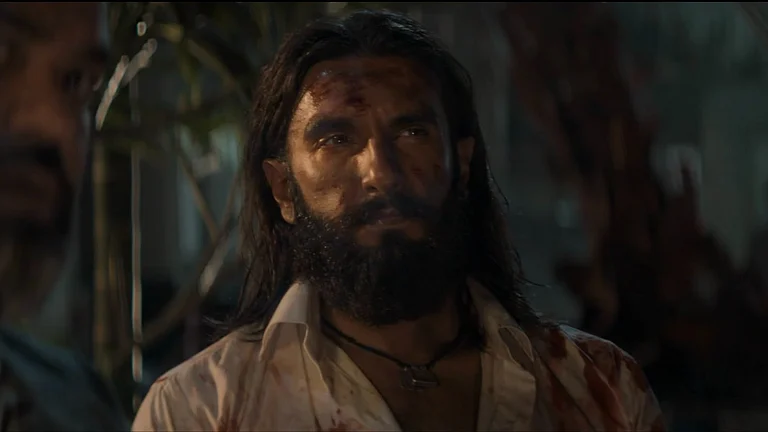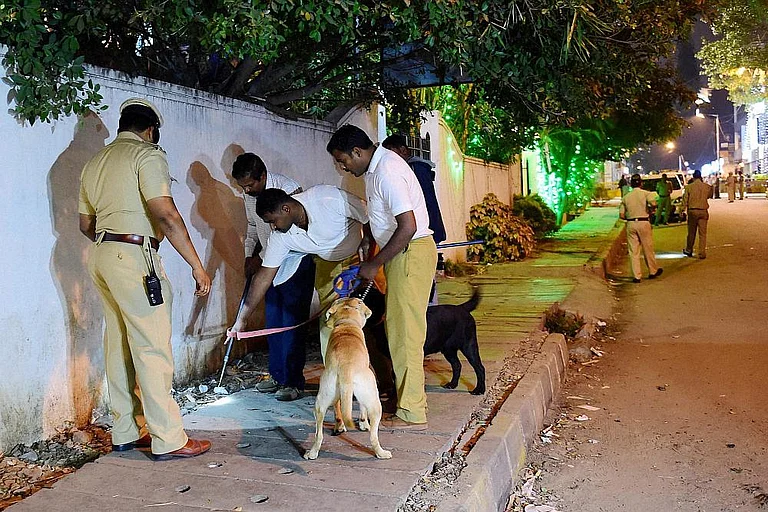Rama’s story or Sriramodantam was something that I heard first thing in the morning, every day, for many years. No, I wasn’t a child-monk or even remotely religious in that sense. It was a mere accident of birth. My mother happened to be a Samskritam teacher and Sriramodantam, an abridged version of Ramayanam, was a basic Samskritam text, in fact, the first one taught soon after the alphabet. And even the initial grammar lessons of Siddharoopam would begin with raamah, raamau, raamaah. So, there was Rama all around, as the Prince of Ayodhya and as an everyman who denotes gender, tense and number in grammar lessons. Yet, there was no Rama in the puja room. Probably because my mother loved Rama more as Valmiki’s brilliant character, very human and very much flawed. Sure, Rama was a great son, probably a good ruler too, but was he a caring brother, a secure partner or a responsible father? And it is in drawing Rama in such bold brush strokes that Valmiki becomes an immortal poet.
It is astonishing to see how audaciously simple the Hindutva project was and still is: to turn Rama into a cardboard cutout and a Ramleela effigy with no flesh, no blood and no mind. Ramanand Sagar, bad acting and cheap grease, that is all it took them. This Rama is the political mobiliser of militant Hinduism programmed to create electoral magic and mandates. You can only counter this cardboard with the real thing, Gandhi’s Rama. But unfortunately, the atheists began attacking this cardboard cutout with more effigies of other religions. If you don’t believe in the fiction of Rama, there is no birthplace. If there is no Rama, then obviously there is no Rahim too. It is absurd to delegitimise Rama by legitimising Rahim. The Marxist historians offered the greatest ammunition to the Hindu Right by disowning Rama altogether. But they didn’t realise that this cutout was all that the unwashed masses had to survive the miserable Indian experience: poverty, violence, casteism, feudalism and worst of all, illiteracy and superstition. They genuinely believe that Rama would deliver, if not in this life, at least in the next. The fiction of Rama is like the Bollywood fix. But the Marxist historians wanted them to watch Mani Kaul instead. So, obviously cardboard cutout communalists won. And we are forced to watch bad actors in terrible costumes getting down from expensive choppers only to click selfies with the rulers.
But the rule of law lost. We the people failed our Constitution. Mob violence and religious frenzy triumphed, blood flowed like dirty water. And in electoral terms the ideological battle against communalism and obscurantism was also lost. The question really is how to reclaim Ayodhya for Valmiki’s Rama, a character and not a slogan. It can happen only when the north Indian masses do not feel insecure about their religion. It is not the majoritarian might that the Hindutva proponents use to mobilise the illiterate masses, but the Hindu’s lack of self-confidence. By constantly pointing at the Varanasi and Mathura mosques, at medieval myths of rape and conversion, and at the colonial humiliation, the Hindutva project succeeds in making the Hindu a victim. Until the Left and the Centre revisit Gandhi’s Rama, the Right will continue to monopolise the religious idiom of the masses.
Meanwhile, it has to be said many times over that the destruction of the medieval mosque on December 6, 1992, was one of the most painful and unacceptable political memories for that teacher who told the story of Rama every morning.


























